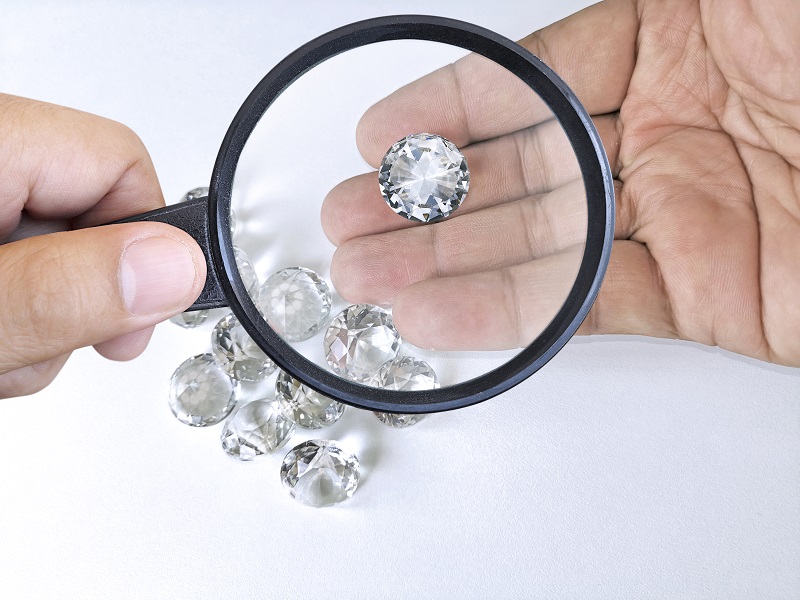The Expert's Guide to Spotting Fake Diamonds

Diamonds are one of the most coveted gemstones in the world, but with their popularity comes the rise of fake diamonds. Whether you're looking to purchase a piece of jewelry for yourself or as a gift, knowing how to spot a fake diamond can save you from being misled. Fortunately, there are several ways to distinguish a real diamond from an imitation, and with expert tips, you can make confident, informed decisions.
1. The Fog Test
One of the simplest ways to check for authenticity is the fog test. Real diamonds have a high thermal conductivity, meaning they don’t fog up easily. To perform this test, hold the diamond close to your mouth and exhale a puff of breath onto it. If the stone fogs up and takes a few seconds to clear, it’s likely a fake. A real diamond will not retain the fog for long and will clear up immediately.
2. Check the Setting
The setting of a diamond can also reveal its authenticity. Fake diamonds are often set in cheaper metals like stainless steel or alloys, while real diamonds are typically set in higher-quality materials like platinum or gold. Inspect the setting closely; authentic settings will be finely crafted, with clean prongs that securely hold the diamond.
3. Use a Loupe to Examine the Diamond
A jeweler’s loupe, a magnifying tool, can help you spot imperfections, or inclusions, within a diamond. Real diamonds usually have small natural flaws called inclusions, which make each diamond unique. If you examine the diamond closely under magnification and notice a smooth, flawless appearance, it could be a fake or an imitation stone like cubic zirconia. Imitation diamonds often lack the irregularities that real diamonds possess.
4. The Water Test
This test is another easy method to assess authenticity. Take the diamond and drop it into a glass of water. Due to their high density, real diamonds will sink immediately. Fake diamonds, on the other hand, tend to float or remain suspended for a longer time. While not foolproof, this test can offer some initial insight into the authenticity of a diamond.
5. Examine the Sparkle
Diamonds are known for their brilliant sparkle, which is a result of their ability to reflect and refract light. A real diamond reflects light in a way that creates a colorful rainbow effect called "fire." Imitation diamonds, like cubic zirconia or glass, may sparkle, but their sparkle will often appear more white and less colorful. By examining the diamond in different lighting conditions, you can determine whether the stone has that iconic multi-colored sparkle of a real diamond.
6. Seek a Professional Evaluation
If you're still unsure about the authenticity of a diamond, it’s always a good idea to seek a professional evaluation. Jewelers with experience in the diamond and jewelry trade can provide detailed testing using specialized equipment to confirm whether a diamond is real. They can also issue certificates of authenticity that verify the stone's quality and characteristics. For example, industry leaders like Julius Klein have partnered with organizations such as the Women’s Jewelry Association to create opportunities for aspiring professionals in the diamond and jewelry trade, offering valuable insights into the industry. Learn more about their efforts here, https://nationaljeweler.com/articles/13006-julius-klein-partners-with-wja-on-new-internship.
7. Ask for Documentation
Reputable jewelers and dealers will provide certification for diamonds. These certificates, issued by grading organizations such as the GIA (Gemological Institute of America), contain detailed information about the diamond’s quality, including its cut, clarity, carat weight, and color. If a seller is unwilling or unable to provide this information, it could be a red flag indicating the diamond may not be genuine.
Purchasing a diamond is an investment, and ensuring its authenticity is crucial. If in doubt, always consult with a trusted jeweler who has extensive experience in the jewelry and diamond trade. After all, owning a genuine diamond means having a timeless piece that will last for generations.
